Rip currents along the beachfront can be your best friend or your worst nightmare. They are great places to look for feeding fish in the surf, but if you get swept off your feet by one, they can be deadly.
So, what exactly are Rip Currents? Rip currents are powerful, narrow channels of fast-moving water prevalent near beaches. Despite being invisible from the shoreline, they can move at speeds of up to eight feet per second, which is faster than an Olympic swimmer can sprint.
As for the misconceptions, let’s clear them up. Rip currents do not pull people underwater; they pull people away from shore. They can occur on any beach with breaking waves, not just ones with strong surf, and size does not necessarily indicate strength.
QUICK LOOK: What You Need to Know
- Rip currents form along beaches as water pushed up on the beach by waves and tides rushes back out to sea.
- Rip currents can be great places for surf fishing as predators hang out on the edges of the current waiting for baitfish and food to be washed out with the current.
- Rip currents can sweep you off your feet and out to sea in seconds
- If caught in a rip current don’t panic and don’t try to swim against the current. Try to float and swim cross current until you get out of the rip current then you can swim back to shore.
- Make use of weather and tide apps. Rip currents are stronger during times of extreme tides and or rough seas.
- Know the signs of rip currents both for finding likely fishing areas and for your own safety.
- When wading in the surf, you should wear a Personal Floatation Device.
- Never swim or fish in the surf alone.
Rip Currents and Surf Fishing
This isn’t just about knowing what rip currents are; it’s also about grasping their hazards. According to the United States Lifesaving Association, rip currents account for over 80% of rescues performed by lifeguards at beaches. That’s a number that can’t be ignored, especially if you’re planning to do some surf fishing.
Rips, or suck-outs as they’re sometimes called, can be great areas to try surf fishing. The same outgoing current that could sweep you off your feet pulls baitfish, crustaceans, and other food out across the sandbars where predators are often waiting for an easy meal.
Gamefish and other predators will hang out on the outside edges of the rip current waiting to ambush their prey that were unlucky enough to get caught in the rip. Casting your baits or lures in these areas can be very productive.
If you’re not prepared, or not aware of the rip current, and are wading the surf, it can sweep you off your feet and out to sea. If you’re not wearing a lifejacket PFD it can get scary, and dangerous, quickly. I know I’ve experienced it first hand and it ain’t fun.
So, how do you spot a potential rip current before you unpack your tackle box? Keep an eye out for differences in water color, look out for channels of churning, choppy water, water moving away from the shore, a line of foam, seaweed, or debris moving steadily seaward, or a break in the incoming wave pattern. These indicators can help you identify rip current areas when choosing your fishing spot.
Most of the time, these are great for fishing and not a real problem for wading when you know they are there and you are prepared for the strong outgoing current. The danger zone is during periods of extreme tides and or rough seas.
Extreme tides and heavy seas move more water and as a consequence produce stronger currents and stronger rip currents. Surf fishing in these conditions can be very productive but you need to stay aware of your surroundings and please use a PFD. I know they don’t look cool but they can save your life.
Frequently Asked Questions About Rip Currents
Rip currents often catch beachgoers by surprise, but if you’re clued up, you can spot the signs and stay safe. Let’s tackle some of the most burning questions asked about these powerful sea currents.

What is a rip current, and why is it important for beach anglers to be aware of them?
A rip current is a narrow, fast-moving channel of water flowing seaward from the shore. Anglers should be aware of them to avoid potential dangers while fishing near the water.
How can I identify rip currents while beach fishing?
Look for differences in water color, seaweed, or debris moving rapidly seaward. Additionally, observe wave patterns and note areas where waves break less consistently.
What should I do if I get caught in a rip current while fishing from the beach?
Stay calm, don’t panic, and swim parallel to the shore to escape the current. Signal for help if needed. Keep your fishing equipment secure to avoid entanglement.
Are there specific times or conditions when rip currents are more likely to occur?
Rip currents can be more prevalent during outgoing tides or when waves are larger. Pay attention to local tide charts and weather conditions.
How does wind direction influence the formation of rip currents?
Onshore winds can contribute to the formation of rip currents, while offshore winds may help dissipate them. Be mindful of wind conditions when fishing.
Should I avoid fishing near areas with visible rip currents?
It’s advisable to maintain a safe distance from identified rip currents. However, not all rip currents are visible, so always be cautious and observant.
Can rip currents affect fishing conditions, such as bait movement or fish behavior?
Yes, rip currents can influence the movement of baitfish, potentially attracting predatory fish. Fishing near the edges of rip currents may increase your chances of success.
How can I use rip currents to my advantage while beach fishing?
Fish often gather near the edges of rip currents to feed on disoriented baitfish. Cast your bait or lures strategically along the edges without putting yourself in danger.
Are there any warning signs or flags that indicate the presence of rip currents on the beach?
Many beaches use warning flags or signs to indicate the presence of rip currents. Familiarize yourself with local beach safety protocols and signage.
Should I wear any specific gear or employ special techniques when fishing near potential rip currents?
Consider wearing a life jacket for added safety. Maintain a stable stance and be cautious when wading. Secure your gear to avoid loss in case of a strong current.
How can I educate myself further about rip currents and beach safety?
Take a beach safety course, consult lifeguards, and familiarize yourself with resources that provide information about local beach conditions and potential hazards.
Always prioritize safety when beach fishing, and stay informed about the specific conditions of the beach you are fishing on.
Safety Tips for Beach Fishing Near Rip Currents
Choosing a spot to fish might seem straightforward, but when rip currents are involved, you need to be strategic. Rip currents can indeed affect where fish are located. These currents can stir up bait and smaller fish, attracting larger predators closer to shore. Knowing how to recognize rip currents can thus be beneficial for your fishing success, aside from the safety concerns.
Start by surveying the beach. Look for areas that could signify a rip current. You’ll want to set up near these spots in calm to moderate conditions. In extreme tides and rough sea conditions, you’ll want to steer clear of rip current areas.
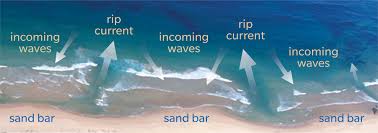
Don’t underestimate the necessity of safety gear. A life jacket may not be the height of fashion, but it could save your life. Keep a whistle within reach too. Not only can it scare off the occasional curious sea creature, but it’s also your siren call for help if you find yourself in a tricky situation. And, don’t go fishing or swimming at the beach alone, ever!
I’m going to let you in on a little secret: weather and tide apps are your best friend. Conditions can change rapidly on the coast, so stay updated. Back when I started surf fishing in the 1970’s we didn’t have weather apps or long-range forecasts.
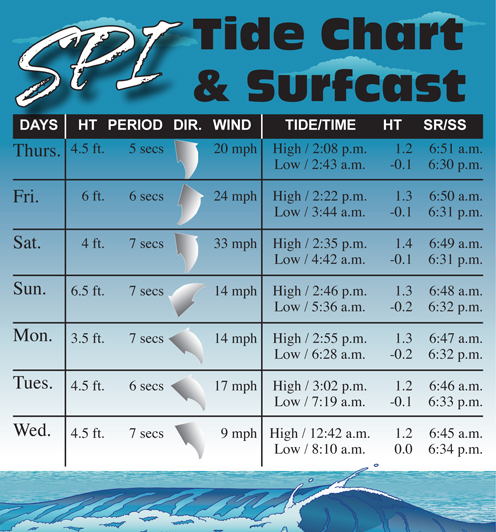
And, sometimes we got caught by weather changes. Tides, wind, and weather patterns are as important as your bait and tackle box. Before heading out, double-check the local weather and tide charts so you’re not caught off guard.
Tropical storms can influence tides and currents hundreds of miles away. They can make rips stronger and more dangerous.
If you want to enjoy the solitude of fishing, at least let someone know where you are. Whether it’s a family member, a friend, or a post on your favorite fishing forum, make a plan to check in regularly. That way, someone’s got your back if you don’t return as planned.
If you find yourself caught in a rip current while fishing, don’t panic. Try to remain calm, float, and conservatively swim parallel to the shore and at a right angle to the direction of the current until you’re out of the current’s grip. Most importantly, don’t exhaust yourself by swimming directly against the current.
Finally, beach fishing near rip currents means being on high alert. Your focus is on the catch, but your priority should always be safety. Be aware of the water’s movement and your surroundings. A change in wave patterns, a switch from incoming to outgoing tide, or an increase in foam and debris can signal a rip current’s presence. Stay vigilant and ready to move if necessary.
First Aid and Emergency Protocols for Rip Currents
I’m going to walk you through what to do in a crisis situation involving rip currents. Knowing these emergency protocols could make all the difference when seconds count. This isn’t just about keeping yourself safe; it’s also about being ready to help others in need.
Your first step, if you see someone caught in a rip current, is to alert the lifeguard if one’s available. If there’s no lifeguard on duty, call 911 immediately. Don’t attempt to rescue the person by swimming out to them as this often leads to further casualties.
While waiting for help, try to maintain eye contact with the person stranded and give them instructions to float or tread water. Most rip current-related fatalities happen when the victim panics and exhausts themselves trying to swim against the current.
In my opinion, basic first aid and CPR training are crucial for anyone who spends a lot of time at the beach, whether fishing or leisure. Many organizations offer this training, and it equips you to respond effectively until professional help arrives.
It’s a good idea to have a throw rope or life ring within easy reach when you’re beach fishing. Knowing how to use these lifesaving tools properly is another valuable skill that’s easy to learn and can save lives.
I hope by now, it’s clear that understanding and respecting the power of rip currents is central to beach safety. They can be your best friend or a deadly enemy.
When it Comes to Rip Currents Knowledge Saves Lives
Over the years, many anglers and beachgoers have faced the danger of rip currents. However, by being informed and prepared, they’ve managed to keep themselves and others safe.
I have had the unpleasant experience of being swept off my feet by a rip current. I was wade fishing the surf during a strong outgoing tide. I saw the rip current and was fishing the edges with lures. The speckled trout were thick and feeding actively and I was catching some very nice fish.
But, while looking down to string a trout, I got too close to the edge and the current washed the sand from under my feet, and the next thing I knew I was headed offshore and I couldn’t touch bottom. And, no I wasn’t wearing a life jacket. And, even worse, I was fishing alone. These two potentially deadly mistakes.
I was fortunate, I had spent many years fishing the surf and was well aware of rip currents and what to do if caught in one. I floated on my back and holding my rod above water in one hand, I side-stroked with the other perpendicular to the current until I was able to get out of the rip and to shallower waters where I could stand.
It was a happy ending for me….. this time. I was able to save my rod and myself. But others are not so lucky. Because of my overconfidence, I could have easily been drowned. The same area where I was fishing has taken many lives over the years due to strong rip currents.
Watch for Rip Currents for Fishing and Your Safety
If you are new to surf fishing or just want to spend time at the beach, it would be a good idea to learn about rip currents. Local fishing clubs often conduct workshops and share valuable insights on rip currents. State game and fish departments typically have useful tips and guidelines regarding rip current safety.
They emphasize not just personal safety but also the importance of looking out for others. These stories and initiatives highlight the incredible impact of sharing knowledge and experience within the community. Through engagement and education, we as beach anglers can contribute to a safer environment for fishing and recreation along our coasts.
KEY TAKEAWAYS:
Always be on the lookout for rip currents. Whether for fishing or just swimming or other water activities.
- Pay attention to weather reports and be mindful of strong tides, rough seas, or other conditions that can turn a mild rip into a dangerous and life-threatening rip current.
- Learn what to do in case you find yourself caught in a rip current. Check online resources like the United States Life Saving Association for tips and guidelines for what to do.
- If caught in a rip current, don’t panic, try to float, and don’t fight the current. Swim across the current until free from the rip so you don’t get exhausted.
- Anglers, I don’t care how uncool it looks, wear a life jacket if you are going to be wading in the surf.
Thanks for taking the time to read about rip currents and beach fishing safety. Your awareness and actions can make a difference. Stay safe out there, and I’d love to hear your feedback or stories related to rip currents. Feel free to leave a comment and share your experience with the community.
As always, stay safe, enjoy the journey and please try to leave it cleaner than you found it. If you have any comments, questions, ideas, or suggestions please leave them in the comment section below and I’ll get back to you ASAP. You can follow us on Facebook: Rex The Beach Angler, Instagram: thebeachangler7, Twitter: @AnglerBeach, and YouTube: Man Art Creations.
P.S. – Thanks so much for checking out our blog we really appreciate it. Just so you know, we may receive a commission if you click on some of the links that appear on our site. This helps us keep our content free and up-to-date for everyone. We appreciate your support!
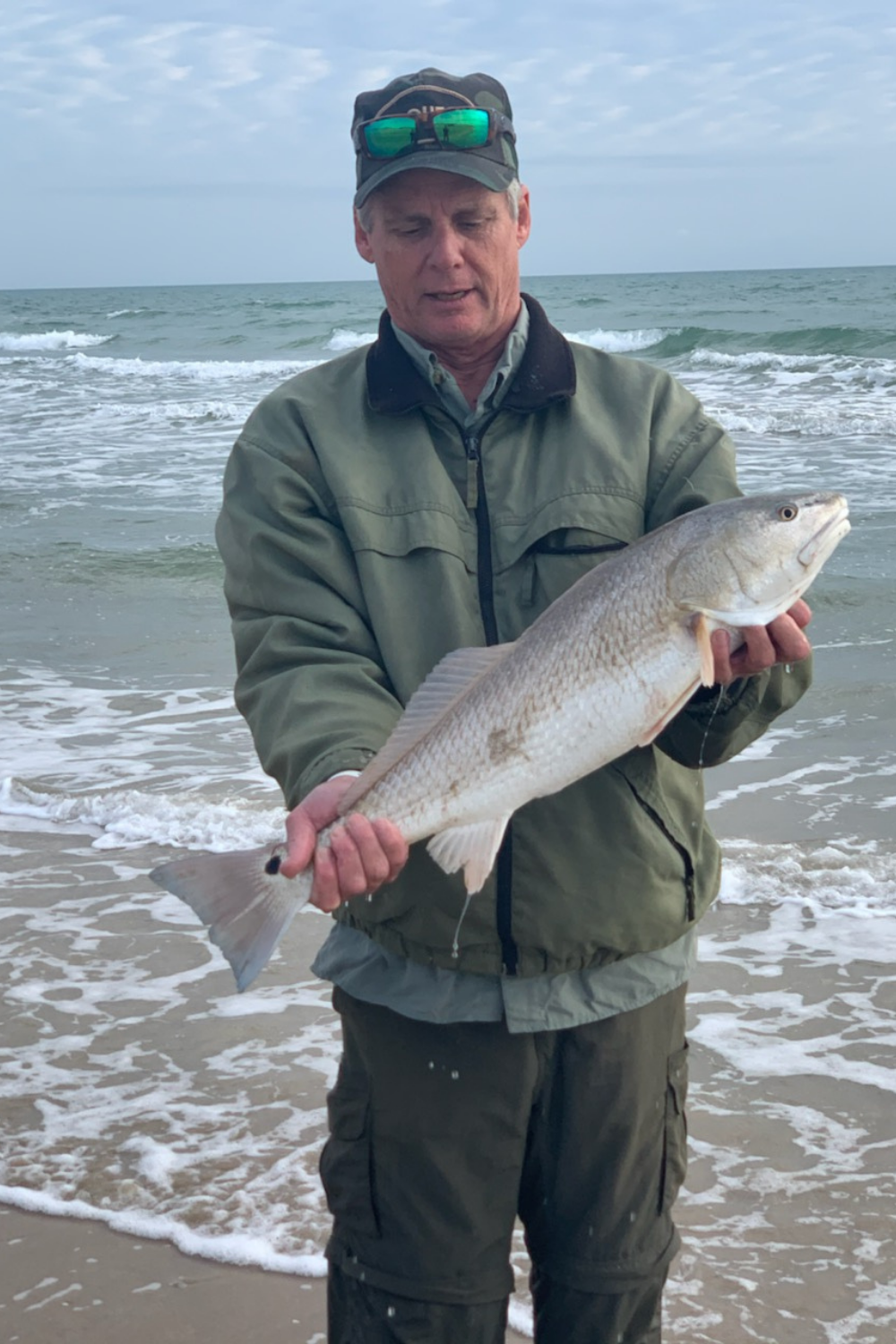
A life long surf fisherman with 50+ years of experience, I am also an avid hunter and outdoorsman. I will be sharing my passion for the outdoors with you so be prepared for hunting, fishing, camping, hiking and more. Along with gear reviews and the latest trends and innovations in the outdoor industry.
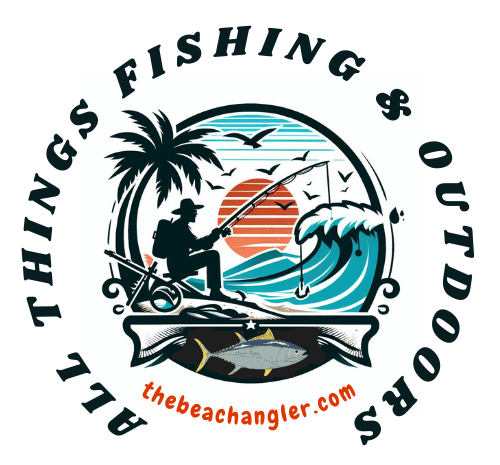
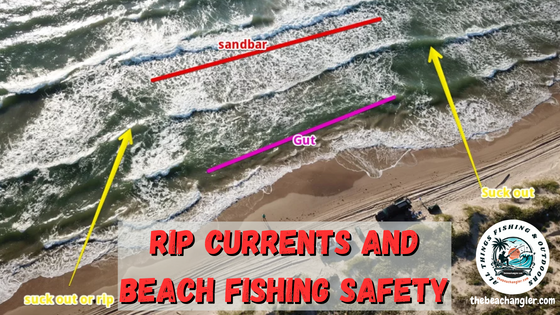

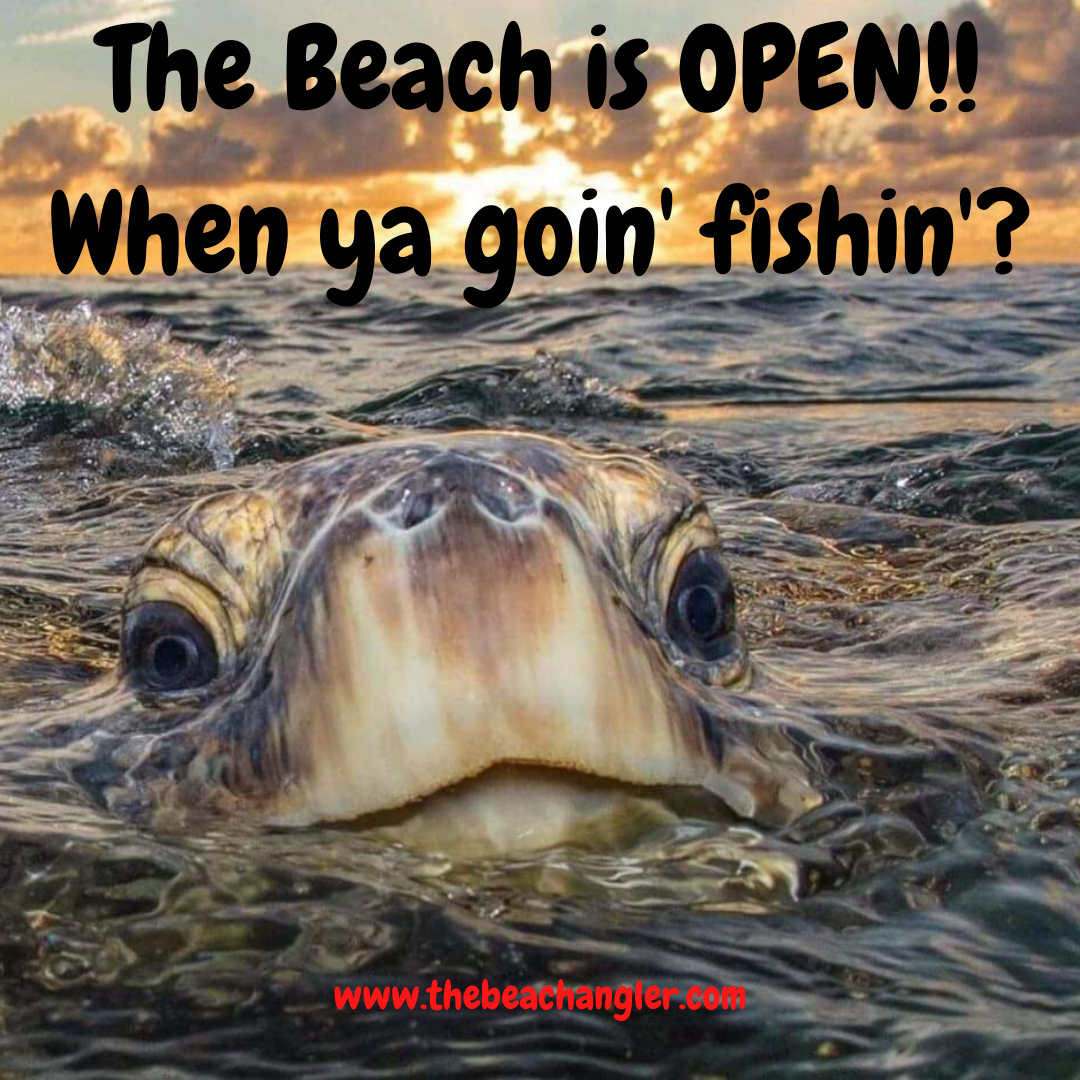
Thank you so much for the thorough review on rip currents. I knew what they were (especially from where I am from) and how they operate (for the most part), but I have never taken the time to understand what to look for, how to get out of them, and the wildlife they might produce. The tips on how to get out of the rips are useful because our first reaction is normally to panic. The picture and especially the video you included pointed out exactly what to look out for. To a degree, it leaves one with an eerie feeling. It is great to realize now that rip currents can be a great spot for fishing and I know now how to fish the area. As you pointed out, I can see where tides do come into play when we are talking about rip currents. It does make sense for an outgoing tide to play a factor. I see you were fishing or at least at the time of your rip tide experience, stringing up a speckled trout. It sounds like you were in Grand Isle, LA. Thank you for this article!
Hey Jeff,
Glad you found it helpful. Fishing the surf I am always looking for rips as likely fishing spots. They can be great for catching fish, but if you’re not paying attention, they can quickly send you swimming. If you don’t panic and “go with the flow”, as they say, you will be fine other than maybe wetter than you planned.
Good luck and Stay Safe,
Rex
Great information! I have been in RIP currents before, on the beach in Florida. From my experience and what I know now it is most important to stay calm, and don’t try to fight it. Panic will cause you to get drained very fast and do the wrong things. But staying calm and and moving sideways perpendicular to the wave will usually work.
Hey Robin,
Rip currents can be your friend or your worst enemy when fishing the beach. You’re right, if you get swept out by one, remaining calm and not trying to swim against the current are your best course of action. And, if you can help it, never go swimming or fishing in the surf alone.
Rex